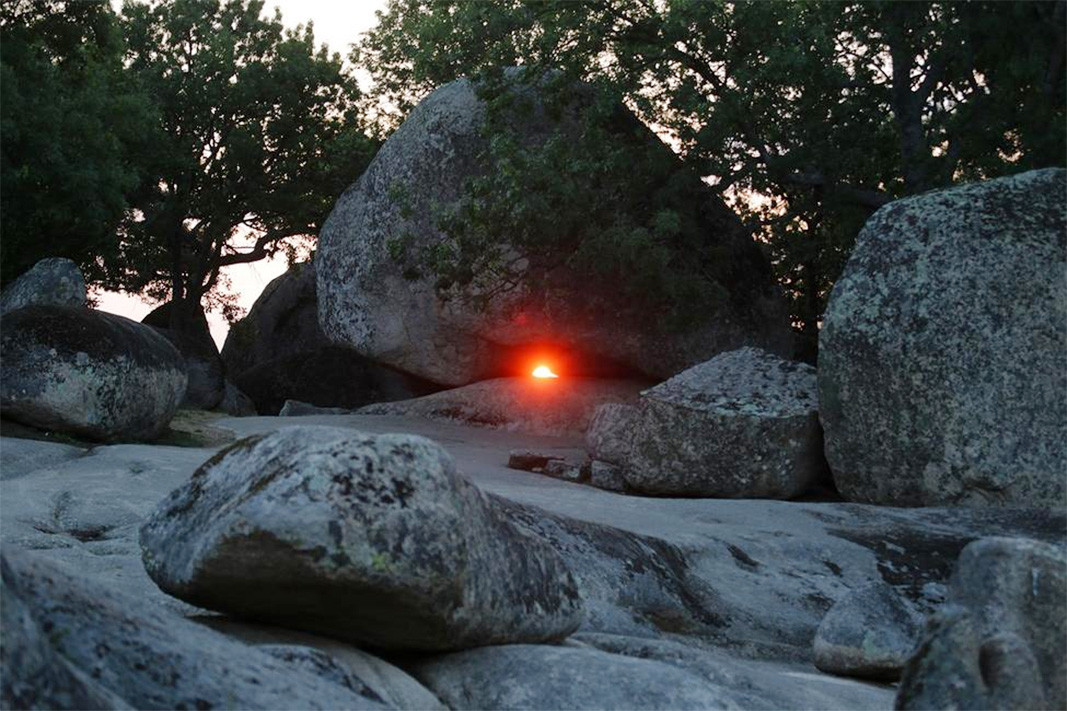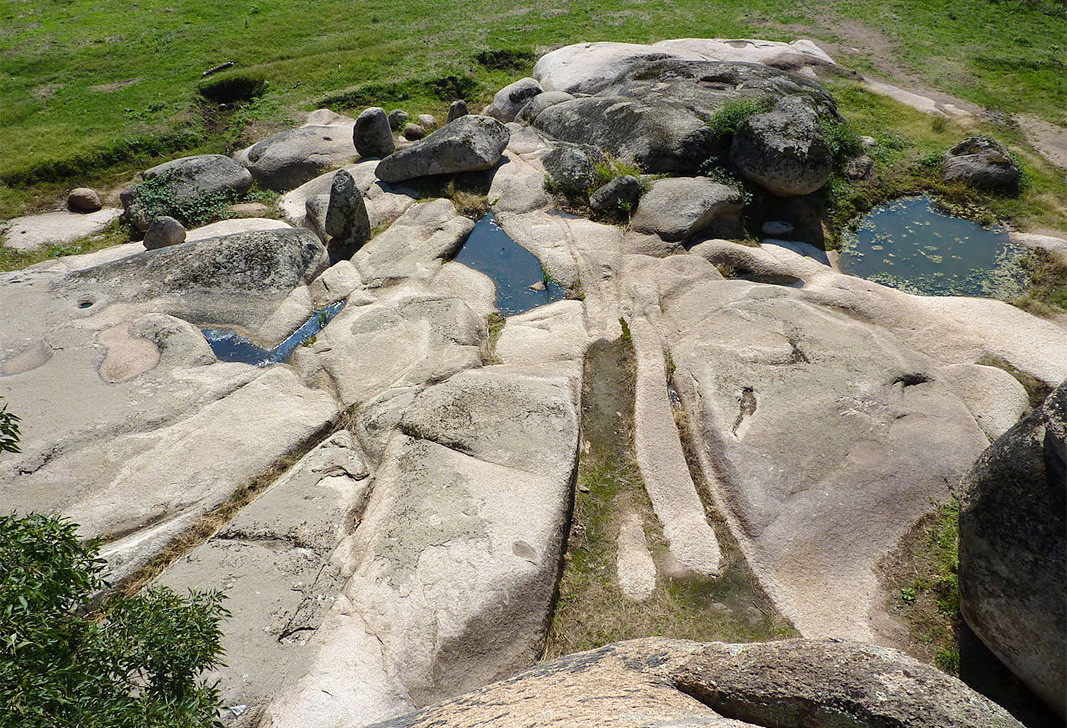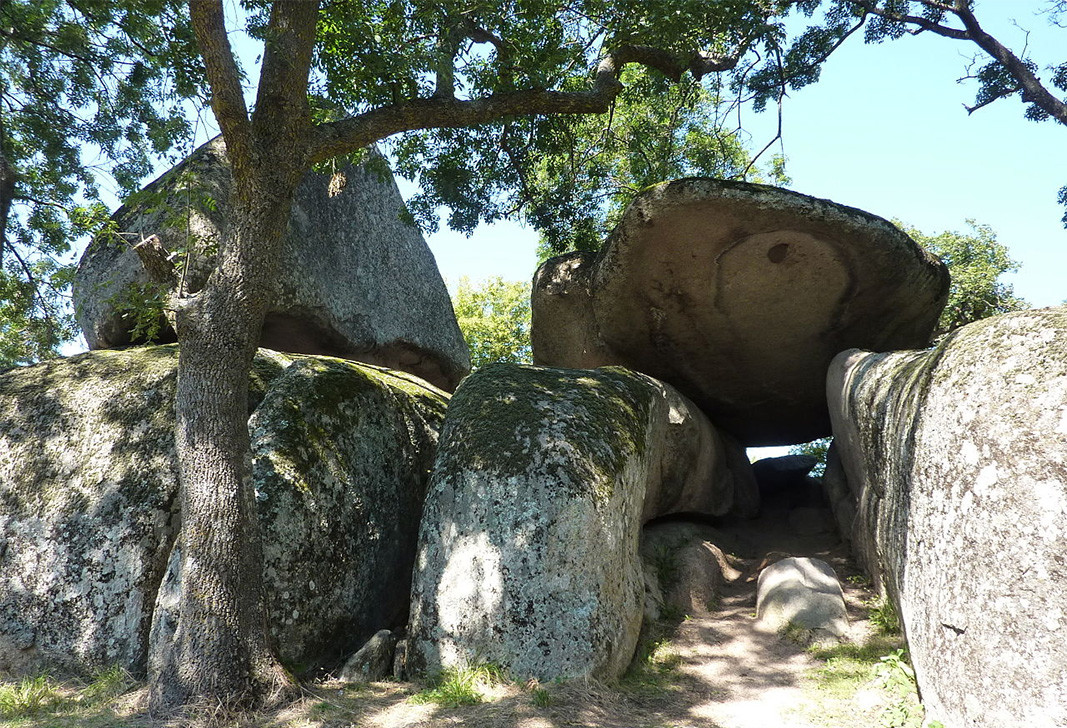Where the Strandzha mountain and the Black Sea meet, surrounded by an oak forest, lies one of the largest Thracian sanctuaries in Bulgarian lands - Begliktash. Located only 4 km south of the town of Primorsko and about 40 km from Bourgas, it is placed at the highest part of the Maslen Cape protruding into the sea. The name comes from the Turkish words "beglik" /tax in kind/ and "tash" /stone/, as during the Ottoman rule in Bulgarian lands the Turks used to collect a tax on the cattle of the Bulgarian population. Begliktash is a sanctuary directly related to the cult of the God of Sun so on the day of the winter solstice /December 22/ when according to the preserved annals our ancestors celebrated the day of the reviving Sun, Radio Bulgaria takes you on a virtual stroll to this ancient place.

About 70 million years ago, the surrounding lands lay at the bottom of the sea. From the mountain massif, near today's city of Burgas, a volcano erupted and the huge pieces of lava immediately froze, as the magma itself brought them here and shaped them into massifs. Thus, over the years, as a result of weathering and sunlight, bizarre natural phenomena were formed. Due to the syenite composition of the rocks and their energetic impact, the place was used in ancient times for performing rituals. They were related to fertility, the equinox and the change of seasons. It is believed that there was the main sanctuary of the Thracian tribe Skirmiani, known as the most ancient metallurgists in ancient Thrace.
"The first data on the place are from the 14thcentury BC”,says Borislava Kirova, curator of the Historical Museum in Primorsko. “After the Liberation of Bulgaria in 1878, the sanctuary became famous thanks to the Czech researcher Karel Škorpil, who together with his brothers Hermann and Vladislav, laid the foundations of Bulgarian archeology. They explored the cultural strata along the Ropotamo River and noticed one of the boulders of the sanctuary, in the shape of an inverted heart. They named it Apostol Tash. It turned out that this is one of the biggest megaliths in the Balkan Peninsula where the Thracians used to worship the sun deity. On the day of the summer solstice, at sunrise, the solar disk can be seen in the opening of the megalith. It was there and then that the ancient Thracians used to perform rituals related to the Mother Goddess and the God of Sun. It is believed that it was precisely at this spot that those who had been initiated would cross from the earthly to the underworld."

Modern research of the rock complex began in 1972 - 1973 as part of the Archaeological Expedition "Apollonia - Strandzha", under the leadership of Prof. Alexander Fol, but it was not until 2002 that the sanctuary became known. Then the archaeologist Tsonya Drazheva from the Historical Museum in Burgas, together with her team, arranged the fallen megaliths in their supposed places. A general plan of the sanctuary and the sites located in it with their purpose was made. Among them are the altar, the throne, the sacred platform, the menhir with the footstep of the sun deity, the depressions on the great rock, the reflection of the constellation Pleiades and the marriage bed:

"The marriage bed itself is as if in a room, hidden from people's eyes”, Borislava Kirova continues her story. “On the sacred site, dotted with many gutters, the Thracians mixed four sacred liquids - water, wine, milk and olive oil. Water symbolized the water element, milk - the air, vegetable oil - the fire, and wine - the earth. In the gutters, the liquids were collected in a common container until they were completely mixed to make up the Cosmos. "

On the day of the summer solstice, the priest stood in the sacred cave - the Womb, located behind the Apostol Tash. Along with the first rays of the sun, it appeared in the centre of the megalith.

The time for the rituals was determined by the sundial, where 16 plates were once located. The place was very important, because it was there that the oracle would make his divinations and predictions, according to the month and day of the year.

The sanctuary itself lasted until the 5th century AD, when these territories became part of the Roman Empire. With the advent of Christianity in the 9th century, the church of Saint Parascheva was built in the small bay. Today, a small path from the sanctuary leads to its remains in the sheltered bay.

English Rossitsa Petcova
Photos: bg.wikipedia.org, museumprimorsko.bg and archive
The exhibition "Codes of Identity", which opens today in Sofia, presents ancient Bulgarian lineages that have left a lasting legacy. The venue is the National Archaeological Institute with Museum at the Bulgarian Academy of Sciences (NAIM-BAS) In..
June 11, 2007 - US President George W. Bush Jr. visits Sofia. According to protocol, the press conference he held for the media took place among the exhibits of the National Archaeological Museum. The official lunch for the guest was later held at the..
On November 10, 1989, a plenum of the Central Committee of the Bulgarian Communist Party ousted its General Secretary and Chairman of the State Council, Todor Zhivkov. This marked the symbolic beginning of the transition from a one-party system to..
The Museum of the Jewish People in Tel Aviv , Israel, today commemorates the 130th anniversary of the birth of Dimitar Peshev, a righteous man of the..
The Feast of the Epiphany - the entry of the Theotokos into the Temple - is one of the oldest and most revered feasts in the Orthodox world. It was..
On November 22 and 23, the Bulgarian Orthodox Church will solemnly celebrate the 100th anniversary of the consecration of the Patriarchal Cathedral "St...

+359 2 9336 661
